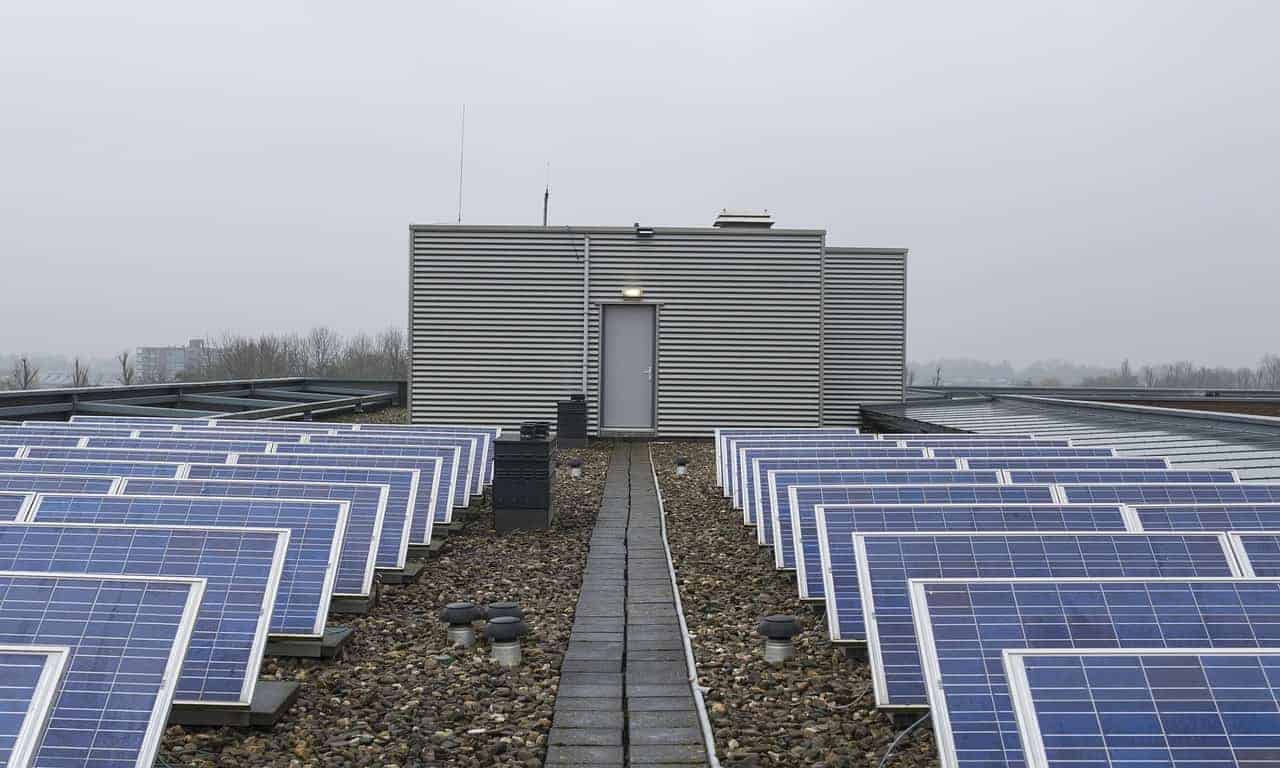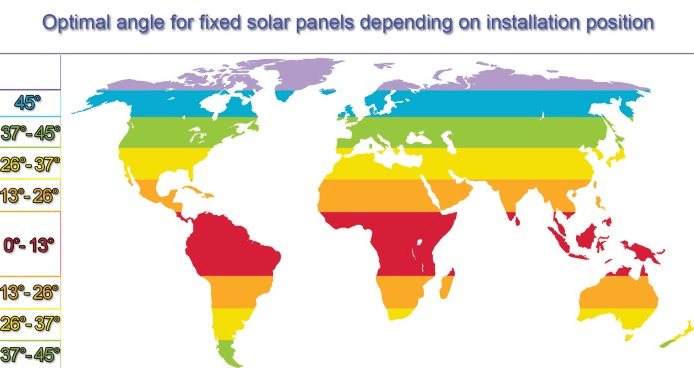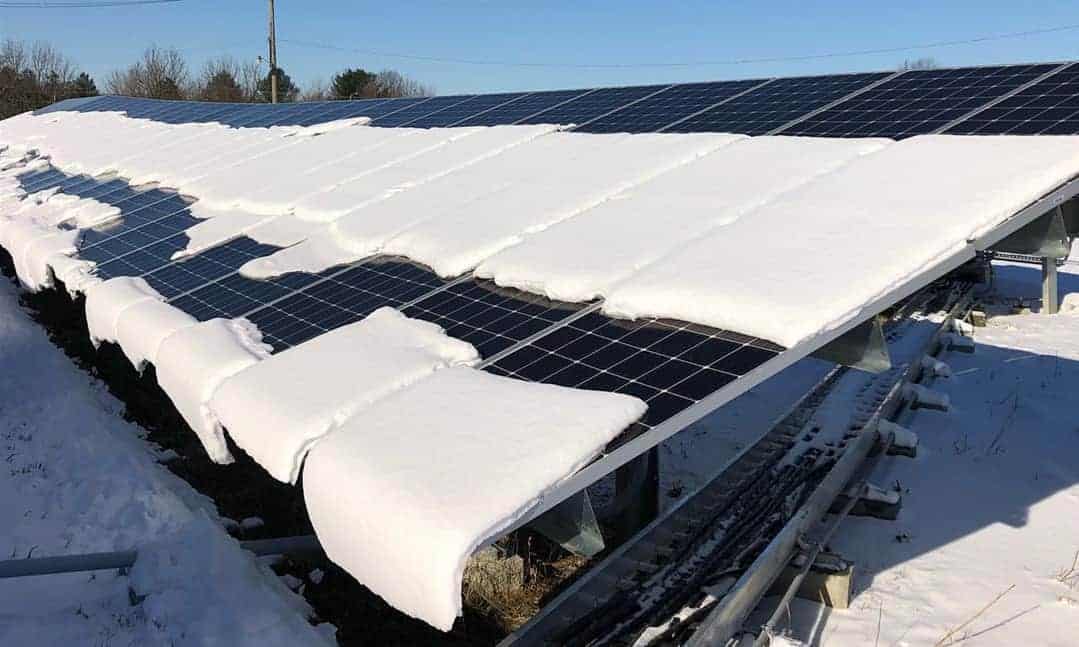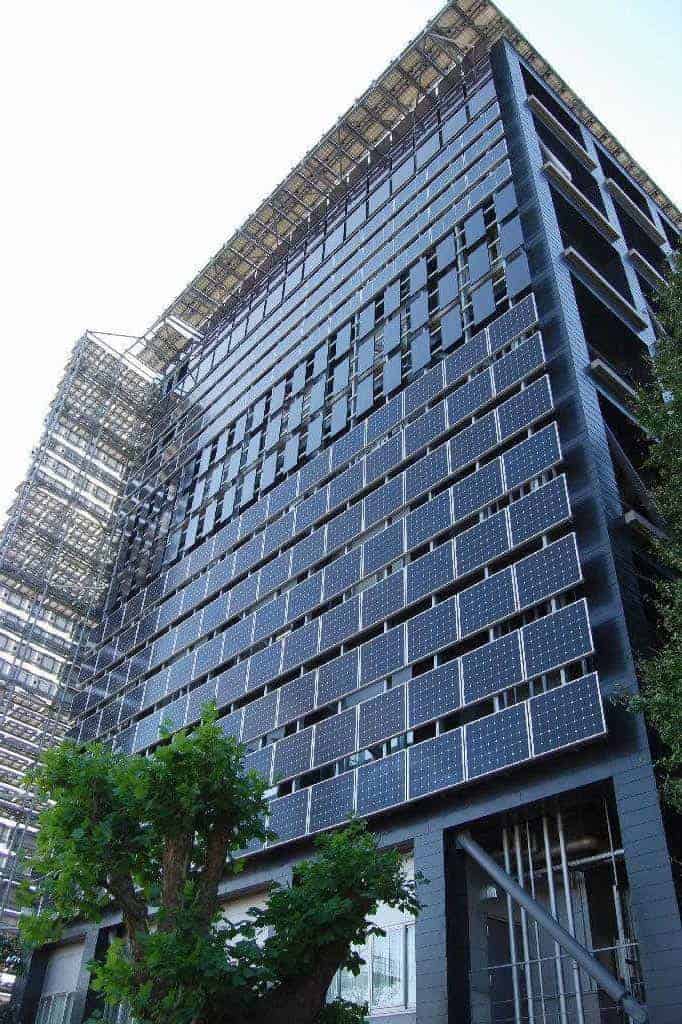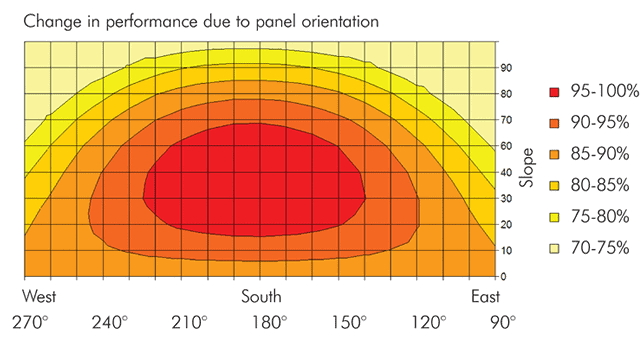The angle you orient your solar panels will determine how much sunlight focuses on the surface. Ultimately, the optimum tilt angle will boost your panels to harvest the highest amount of power.
So, what is the best angle for solar panels? The optimum tilt angle is the solar panel orientation that allows the sun rays to form a 90° angle with the panel surface. Photovoltaic cell systems harvest the highest amount of sunlight when the sun is perpendicularly over the panels. The tilting you make to achieve optimum electricity conversion is the best angle for your solar panels.
In this post, we’ll go into the details of finding the best angle to tilt your photovoltaic systems. Our comprehensive article will examine how your roof, latitude, seasons, and time of the day affect the optimum solar orientation. Shall we?
What’s the solar panel angle?
The optimum tilt or orientation, also known as the best panel angle, is the sunray and solar panel angle. The pitch determines the surface area that faces the sun. Tilting the panels to face the sun’s direction optimizes the process of converting sun rays to electricity.
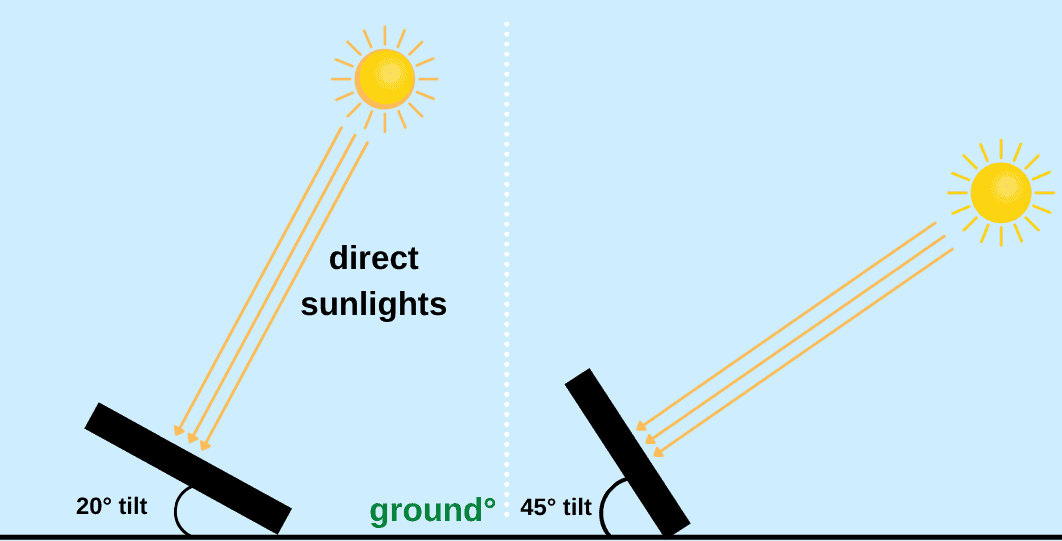
The best tilt angle depends on the roof, latitude, season, and time of the day.
How to choose the optimum orientation for your panels
Picking the proper direction for your solar panels is just as important as the panel you use. A panel needs to have a high concentration of photovoltaic cells, and the angle needs to be well calculated.
Video showing how to calculate the best angle for your solar panels
The goal of tilting is to ensure the panels are always facing the sun. The sun rays should always hit the solar panels perpendicularly.
A few elements determine the optimum orientation for your panels. These include:
- Your roof
- Latitude
- Time of the day
- Season
Best angle for solar panels by Latitude
The optimum tilt angle depends on your location and latitude. Latitude is the angle at which the sunrays form with the earth’s surface during the equinox. The latitude reading increases as you move away from the Equator.
During Equinox, the sun is perpendicularly overhead the equator. Each of the earth’s hemispheres receives an equal amount of sunshine.
You should set your photovoltaic cell systems to face the Equator at that time. If you’re in New Zealand, Australia, or other regions in the southern hemisphere, you’d have to tilt your panels north. If you’re building in Europe, Russia, America, and Canada or anywhere in the north, tilt panels south.
But, the best panel tilt angle depends on your latitude. The optimum tilt increases as you move away from the equator.
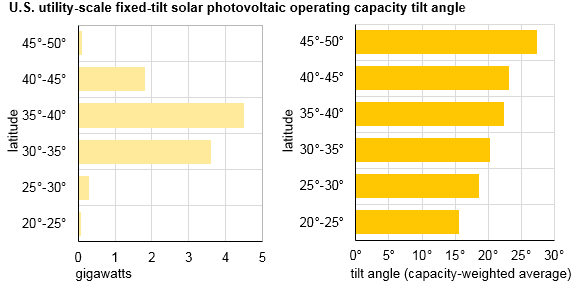
Builders in Indonesia, Kenya, Maldives, Ecuador, or Northern Brazil would not need to tilt their solar panels much. Houses in Canada will have to tilt their panels at a larger angle than those in Texas or Mexico. Similarly, buildings in England and Germany would have to tilt the panels at a higher degree than those in Turkey, Spain, or Greece.
Alaskans, Aussies, Russians, and New Zealanders slant their panels more than everyone else because they are farthest from the Equator.
Calculating the best solar panel tilting angle for your latitude is simple- you just pick the latitude. Tilting your panels at the angle of your latitude means that they face the sun directly. So, they get a balanced exposure to sunlight throughout the year as the sun’s declination changes by up to +/- 23.5° over the course of the year.
In context, if the latitude in Australia is 35° the best angle to tilt your solar panels during Equinox is 35°.
See your latitude and best tilt angle from the map below:
The best angle for solar panels by climatic season
If you want to produce maximum electricity throughout the year, you’d have to change the tilt angle depending on the season. The sun’s apparent position in the earth’s sky changes depending on the season or time of the day. Adjusting your panels regularly to face the sun at all times gives you maximum output.
|
State/Country |
Latitude |
Summer |
Winter |
|
Australia (Sydney) |
34° |
49° |
49° |
|
Britain (London) |
51.15° |
65° |
30° |
|
Canada(Vancouver) |
49.16° |
65° |
30° |
|
Germany (Munich) |
48.13° |
64° |
30° |
|
New York |
40.7° |
72° |
36° |
|
Texas |
31.96° |
80° |
40° |
|
California |
36.78° |
80° |
32° |
If you don’t like sophisticated calculations, you can just use a simple formula. The theory for determining the best tilt angle for your season suggests that the sun tilts up to 23.5°. So, you can cover that if you change the panel orientation by 15° for every season.
- First, find out what your latitude is.
- Orient your panels at 0° when the sun is overhead your latitude.
- At Equinox, tilt them to your location’s optimum angle.
- Then, add 15° to the optimum angle during the winter, and subtract 15° during the summer.
Do I Need Solar Panels If I’m From A Cold City?
Solar panels work in Alaska, so they should in your city. Solar energy has the potential to provide nearly 23% of all power in the cold state. Scientists and enthusiasts suggest that solar panels are even more efficient in cold places.
And yes- your solar panels will still work effortlessly during the winter. The output will be lower than what you get during the summer because the days are shorter, and snow may clog the panels.
Do I Have To Tilt My Panels Every Hour For Maximum Power?
Lots of light from the sun could get diffused if you don’t tilt your panels accordingly. The rays from different angles with the panels throughout the day, and adjusting them could rake in colossal power.
However, it can be tasking to stay on the roof of the building tilting your panels every hour. Still, it would cost you more to hire someone to watch over the panels 365/24/7. That’s why experts just place it at the ideal azimuth and solar angles and only change it in a season.
Fortunately, solar tracking technology can do all this for you. The technology enables the PV panels to face the sun at all times. They follow the sun from sunrise to sunset and harvest the optimum energy.
Single-axis trackers follow the sun’s daily motion from the east in the morning to the west in the evening. While a stationary solar panel with fixed orientation will only have a potential of 75°only, the tracker boosts the panels to a 150° view. It’d be 180°, but; the location’s horizon effects bring all the change. This adds a minimum of 75% more power to your harvest.
Then, the dual-axis tracker will follow the path of the sun in all seasons. The panels will automatically tilt to the optimum angle without you having to do it.
The solar trackers keep the angle of incidence between the sun and the photovoltaic surface low all the time to reduce power lost to panel misalignment by over 80%.
What About Solar Panels That Are Installed On the Facades Of Buildings?
Installing your solar panels vertically means you’d get little power. However, this could make sense if there are special constraints with the building that require solar panels to be installed on the sides instead of the roofs.
Vertical installation could be a technical decision to get rid of snow accumulation during the winter. Experts recommend that solar panels be oriented at the optimum tilt angle.
What Happens When You Deviate From The Optimum Solar Panel Angle?
If your solar panels are not getting direct sunlight, a small amount of solar energy will hit their surfaces. Thus, only a little of it gets converted to electricity.
Should I Tilt My Roof To The Ideal Solar Angle?
If you already have a flat roof, you don’t have to change it. There are always cheaper ways to tilt the solar panels without having to damage the entire roof.
But, if you’re building it fresh, or from scratch, and you have plans of installing solar panels on your roof; you may want to tilt them in a way or angle that will harvest maximum solar energy.
What If The Roof Faces East And West?
Many people have their roofs facing east and west instead of North and South. Orienting your solar panels to the east attracts lots of morning sunshine and produces a lot of electricity.
In the late afternoon when the sun is hot, your panels will still be producing more as long as they face west. Such an orientation works pretty well when you’re looking to produce solar power for your personal use.
However, when you want maximum power from your solar systems, you will want to position them at the most ideal tilt angle for your city. This way, they will produce more electricity in the morning and the afternoon.
The Best Angle for Solar Panels by Type of Roof
If your roof is flat, you still need to have a small inclination of about 5-10° to prevent water from pooling at the panels. Water should find its way from the surface of the panels because you don’t want it to penetrate the seals and damage the solar cells.
Most panel brands state a minimum 10° tilt in their warranty conditions, and if you have your panels completely flat, you may void your chance to receive compensation.

